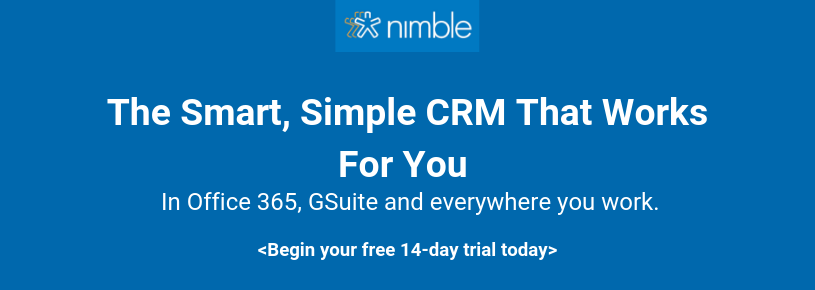Email as a marketing and promotional channel is admittedly one of, if not the oldest marketing channel, and has actually been around since the 1960s in a very limited form.
So, with all the newer channels and technologies from social media, visual-oriented promotions, and mobile-focused marketing, it’s no secret that many marketers and so-called experts have predicted the diminished role for email within the broader digital marketing field. Some have even predicted the death of email marketing, but according to the latest data and forecasts, that is statistically impossible.
Email marketing will continue to be a very important foundation of the whole digital marketing efforts. However, with the walls between all the different marketing channels continue to diminish in recent years, email marketing is now a part of a more integrated digital marketing effort.
With that being said, we should think of email marketing in a broader sense, as a part of the whole digital marketing strategy.
Segmentation to Build Authentic Connections
A study conducted between 2014 and 2018 has suggested that the average office worker gets around 90 emails a day, and with the state of digital marketing these days, we can only expect this number to rise in 2020 and onwards.
Meaning? It’s getting harder and harder to capture anyone’s attention over the internet, and it’s getting more challenging to get our email noticed and opened.
With that being said, one of the keys to successful email marketing in 2020 is to truly connect with your target audience’s interest, and if possible, with each individual recipients’ unique interests.
Proper segmentation of your email list into more targeted groups can effectively improve open rates and click-through rates and at the same time reduce unsubscribe rates and opt-out.
Depending on your business and the product/service you sell, you can segment your email list based on various factors from demographics (age, gender, interest), geolocation, previous actions, and so on. The idea is to make sure you can build authentic and fruitful connections with the right people, as we will discuss in the next point.
Hyper-Customization and Personalization of Content
Segmenting your email list alone won’t bring much value by itself, but it’s just a means to an end for the main objective: personalization of your email content so each email can effectively address the individual recipient’s pain points.
The main idea here is that by customizing your email’s content and automate the email blast schedule, we can send the right content to the right people at the right time. This is how we can maximize engagement, improve open rate, click-through rate, and maximize conversions.
So, the secret here is to really understand all your individual audience segments: their behaviors, pain points, and how you can cater to their unique needs. The more details you can define, the better your overall email marketing campaign will be.
You should especially try to answer questions such as:
- What made them open an email?
- What made them click on a link and visit a website?
- What made them subscribe to an email list?
- What they are looking for in your product or service?
- How will they define good customer service?
Familiarize yourself with your email recipients. You should also personalize your email follow-ups and reminders, not only your initial email content. The secret here lies in the details.
Utilize Specific and Clear Call-to-Action
This is a very important concept to grasp: getting your email subscribers and/or recipients to open your email and consume the content in its entirety won’t bring any real value to your business. At least, not yet.
Instead, your email should have a specific objective that is going to bring value to your brand in one way or another. An effective call-to-action will be the key to achieving these objectives.

These objectives can include, but not limited to:
- For your email recipient to visit your website
- Subscribe to your email newsletter
- Follow your social media profiles or like a specific post
- Purchase a product/service in your eCommerce store
You should drive them to these objectives/goals with an effective, well-placed, and clear CTA.
So, how can we get people to click your CTA? The most important thing to consider is whether your CTA offers something valuable to the target audience. You should offer something valuable at low or no cost, the more valuable the offer is perceived by the recipient, the more likely they are going to click your CTA. Avoid asking for too much commitment too soon. Timing is also key here.
You can be unique with the copywriting of your CTA button. For example, if your product or service is more playful and fun by nature, you can say something playful like “Send Me Something Special Now!” instead of the usual “Subscribe to Our Newsletter”. There’s no one-size-fits-all rule here, so you can always experiment.
Check out this article listing various effective CTA usages in email marketing.
Make Your Emails Mobile-Friendly
It’s no secret that more and more people are now using their mobile devices to browse the internet, many of them are exclusively mobile.
80% of internet users own and actively use at least one smartphone. Mobile marketing is now the norm, no longer a luxury, and that’s also the case with email marketing: make sure all of your email promotions and newsletters are mobile-responsive and properly optimized.
If you are using popular email marketing platforms (MailChimp, Campaign Monitor, ConvertKit, etc.), most likely you wouldn’t need to worry about mobile-responsiveness, as most of these platforms offer ready-to-use, mobile-friendly templates. Yet, you might still need to optimize some of the content elements.
It’s also important to consider the overall length of the email content for both textual and visual assets. Make sure your textual content is easily readable on a mobile device. Make sure all of your image files are displayed properly. If you are using forms, make sure all the fields are easily clickable on a smartphone screen and don’t include too many fields.
Also very important, make sure your email content is properly optimized and compressed so it won’t load slowly. Test your content on as many devices as possible.
Optimize and Personalize Your Subject Lines
Your email headlines—or subject lines— are the most important factor affecting the open rate, and can either make or break your whole email marketing campaign. Email recipients may ignore, or even worse, delete your email if the subject line is boring or sounds like a scammy promotion.
According to MailChimp’s recent study regarding the email subject line, short, to-the-point, and descriptive subject lines generally work best. Depending on the particular email’s objective, you might also want to implement personalization. Using the recipient’s first name is the common practice nowadays, and various email marketing tools provide the feature to easily do this.
Optimize the subject line according to the email’s purpose. For instance, you can include words to give the impression of urgency if the objective is to entice conversion. Using questions in your subject lines, for example, to challenge a common assumption or misconception can be very effective.
Optimize Your Email Blast Frequency
Frequency in email marketing is a tricky subject. As mentioned above, the average office worker receives a lot of emails per day, and if your email is sent at the wrong time, it might be deleted immediately or even worse, flagged as spam.
Sending too little emails at any given time might cause your audience to forget about your brand and you might lose engagement. On the other hand, sending too many emails in, for example, a week, can annoy your audience and cause them to unsubscribe. So, finding the right balance is key.
In most cases, limiting your emails to just one email per week is proper, except when you have something really important and valuable to say (i.e. announcement of your new product, breaking news about something important, etc.)
Make the full use of your email list segmentation (as discussed above) to create subject lines that can attract and engage a specific audience.
Build a Community
The internet today is no longer about one-way communication where people solely browse the net just to find and consume information. Instead, it’s now a two-way platform where people can also converse in real-time with your brand, with other prospects/consumers, and even provide reviews and feedback about your product and/or service.
So, you can bring your email marketing campaign to the next level by making your newsletter an attractive and engaging community for your customers. You can, for example, share exclusive behind-the-scenes stories about your company or your product that is not available anywhere else. You can also share personal updates about your team that might not necessarily relate to your products/services. Sharing case studies and testimonials from fellow customers can also be very effective.
Final Statements
Email marketing is still a very effective part of digital marketing as a whole in 2020 as the start of a new decade. It is expected that at least until 2025, email marketing will remain the top-performing promotional channel with the highest ROI.
It’s true, however, that the email marketing field is now more competitive than ever, and it’s not as easy as it was a decade ago. A proper strategy and especially understanding your target audience will be the keys in achieving email marketing success in 2020 and onwards.


